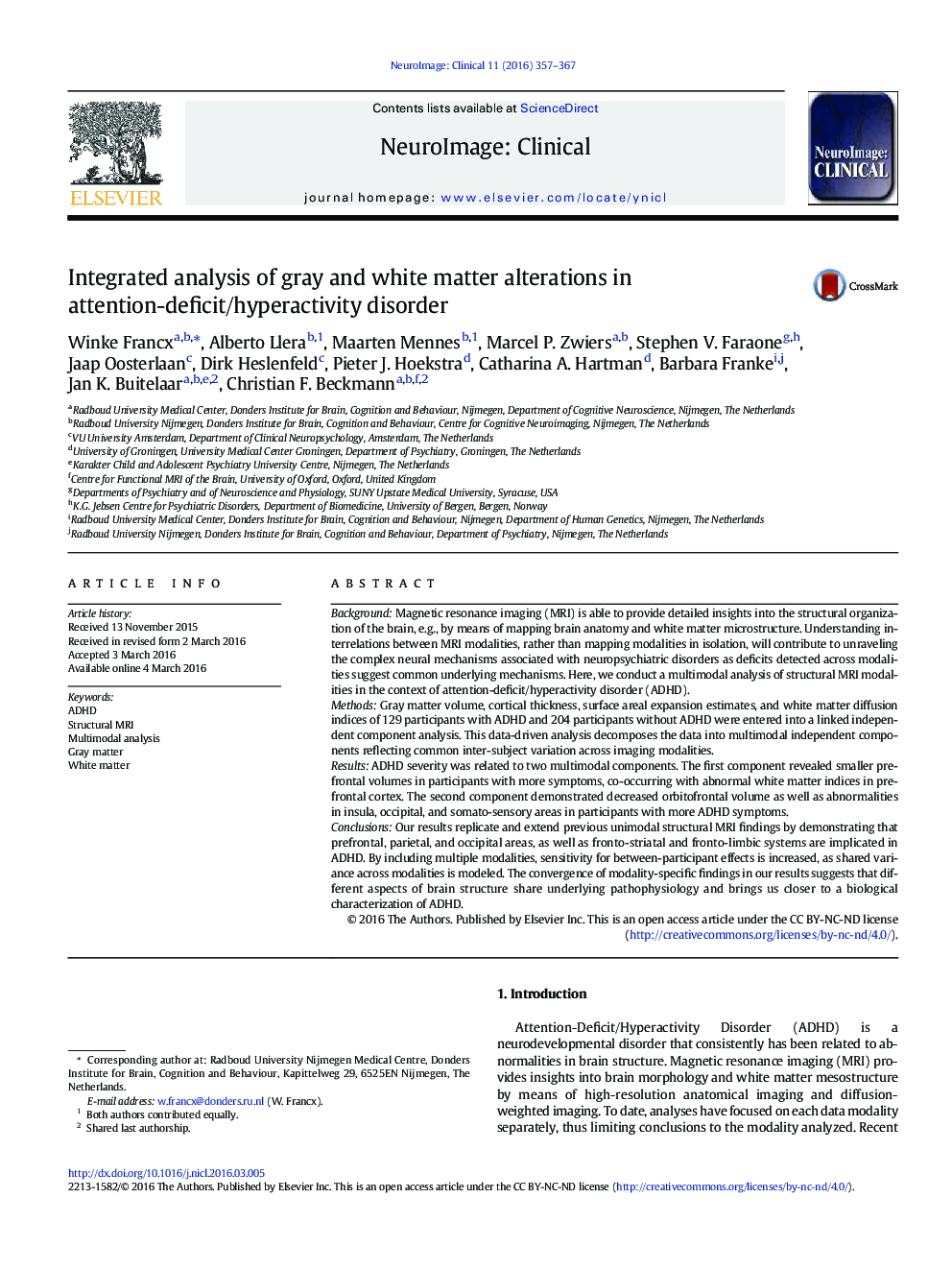| کد مقاله | کد نشریه | سال انتشار | مقاله انگلیسی | نسخه تمام متن |
|---|---|---|---|---|
| 3074927 | 1580956 | 2016 | 11 صفحه PDF | دانلود رایگان |
• We use a multimodal approach (Linked ICA) to investigate changes in brain structure related to ADHD.
• Linked ICA decomposes multimodal data into networks and links the modalities by assigning a shared-subject course.
• Both white and gray matter show spatially consistent abnormalities.
• Same subjects are driving the patterns present in different modalities.
• We replicate previous unimodal findings.
BackgroundMagnetic resonance imaging (MRI) is able to provide detailed insights into the structural organization of the brain, e.g., by means of mapping brain anatomy and white matter microstructure. Understanding interrelations between MRI modalities, rather than mapping modalities in isolation, will contribute to unraveling the complex neural mechanisms associated with neuropsychiatric disorders as deficits detected across modalities suggest common underlying mechanisms. Here, we conduct a multimodal analysis of structural MRI modalities in the context of attention-deficit/hyperactivity disorder (ADHD).MethodsGray matter volume, cortical thickness, surface areal expansion estimates, and white matter diffusion indices of 129 participants with ADHD and 204 participants without ADHD were entered into a linked independent component analysis. This data-driven analysis decomposes the data into multimodal independent components reflecting common inter-subject variation across imaging modalities.ResultsADHD severity was related to two multimodal components. The first component revealed smaller prefrontal volumes in participants with more symptoms, co-occurring with abnormal white matter indices in prefrontal cortex. The second component demonstrated decreased orbitofrontal volume as well as abnormalities in insula, occipital, and somato-sensory areas in participants with more ADHD symptoms.ConclusionsOur results replicate and extend previous unimodal structural MRI findings by demonstrating that prefrontal, parietal, and occipital areas, as well as fronto-striatal and fronto-limbic systems are implicated in ADHD. By including multiple modalities, sensitivity for between-participant effects is increased, as shared variance across modalities is modeled. The convergence of modality-specific findings in our results suggests that different aspects of brain structure share underlying pathophysiology and brings us closer to a biological characterization of ADHD.
Journal: NeuroImage: Clinical - Volume 11, 2016, Pages 357–367
